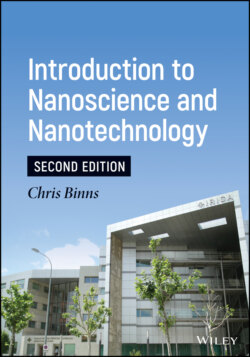Читать книгу Introduction to Nanoscience and Nanotechnology - Chris Binns - Страница 31
2.2.2 Entry Via the Intestines
ОглавлениеThe lung clearance mechanism is designed to get the nanoparticles out of the lung and into the digestive system via the saliva and removed from the body by the reticuloendothelial system (RES) described in Chapter 8, Section 8.1.2. The system removes the vast majority of nanoparticles via the urine and feces but some swallowed particles can get in (or, in the case of nanoparticles cleared from the lungs, back in) via the small intestine. This is designed to remove useful molecular ingredients, like fats, carbohydrates, etc. from the food that has been broken down in the stomach and enter them into the blood circulation where they can be used by the body's cells. The fluid containing the processed food is carried through the central tube of the intestine (the lumen), whose walls are made of small finger‐like projections called villi, shown in Figure 2.7. The villi are constructed from tightly packed cells knows as enterocytes that are special designed to ingest matter and themselves have contorted membranes with tiny projections called microvilli. This highly convoluted interior presents a surface area in the region of 200 m2, that is, even more than the lungs. The villi are permeated with tiny blood vessels so that useful molecules, which are further processed by the enterocytes, are able to pass into the bloodstream and this is also the route by which nanoparticles can enter.
The uptake of nanoparticles in the intestinal tract is complicated and there are other routes into the circulation as well as through the enterocytes. It has been shown that translocation depends on particle size, coating and surface charge [6]. The first barrier to cross is a mucous layer, which is excreted by specialist cells known as goblet cells that are interspersed with the enterocytes in the villi walls and is designed to act as a filter. It was shown more than 20 years ago that 14 nm latex particles could cross this barrier in 2 minutes while it took 415 nm particles 30 minutes and 1000 nm particles were unable to cross at all [11]. The enterocytes act as a further barrier and again, the ability to be absorbed and pass into the interior of the villi depends on a number of factors including size. As well as blood vessels, the villi are permeated with lymph vessels and nanoparticles that make it through the wall can enter the lymph system, where they are likely to trigger an immune response or the blood circulation where the ones that are not removed (<10%) can be deposited in different organs.
Figure 2.7 Villi and microvilli of the small intestine. The surface of the central tube (lumen) of the small intestine is made of finger‐like projections (villi), which are composed of enterocytes that themselves have hairlike projections (microvilli). The internal surface presents an area of some 200 m2 to the passing fluid containing nutrients.
Source: BallenaBlanca. https://commons.wikimedia.org/wiki/File:Villi_%26_microvilli_of_small_intestine.svg. Licensed under CC BY‐SA 4.0 (https://creativecommons.org/licenses/by‐sa/4.0/deed.en).
